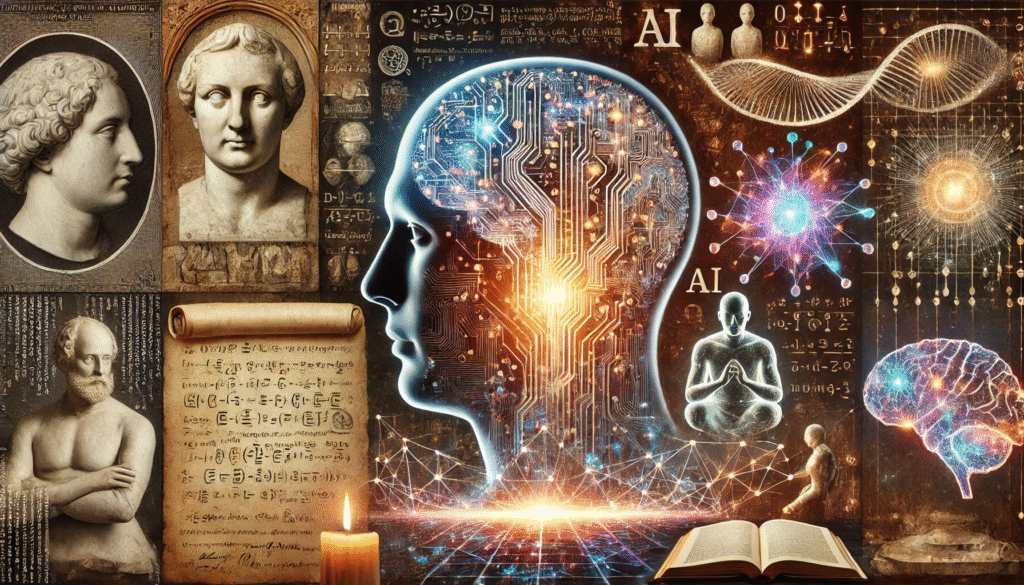
ChatGPT:
Mind as Machine: A History of Cognitive Science — Margaret Boden
This two-volume work by Margaret Boden traces the evolution of cognitive science from its roots in philosophy and psychology to its integration with computer science, neuroscience, linguistics, and artificial intelligence. It blends intellectual history with conceptual analysis, showing how the idea of the “mind as machine” shaped modern thought.
Conclusion
Boden presents cognitive science as an interdisciplinary “grand project” that emerged in the mid-20th century, rooted in the premise that thinking can be understood as computation. She begins by tracing influences from philosophy of mind, cybernetics, and early AI pioneers like Turing, McCarthy, and Minsky, then follows the field’s development through neuroscience breakthroughs, computational models, and linguistic theory. The book highlights the tensions between symbolic and connectionist approaches, debates over consciousness, and the interplay between theory and technology. While acknowledging that many cognitive science predictions were over-optimistic, Boden argues the field profoundly changed our understanding of human and machine intelligence, paving the way for today’s AI boom. The work concludes that the “mind as machine” metaphor is not just a scientific hypothesis but also a powerful conceptual framework that reshaped how humans think about themselves.
Key points
🧠 Interdisciplinary origins: Cognitive science arose from philosophy, psychology, computer science, linguistics, anthropology, and neuroscience.
🖥 Computational theory of mind: Central idea that cognition can be modeled as information processing, similar to a computer.
⚙ Turing’s influence: Alan Turing’s theories on computation, the Turing Test, and machine intelligence underpin much of the field.
🔗 Symbolic vs. connectionist models: Ongoing debate between rule-based symbolic AI and neural network approaches.
🗣 Chomskyan linguistics: Noam Chomsky’s generative grammar reshaped theories of language acquisition and processing.
🔬 Neuroscience integration: Cognitive science increasingly incorporates brain imaging and neurophysiology.
📚 Philosophical debates: Consciousness, intentionality, and the “Chinese Room” argument remain central controversies.
📈 Technological feedback loop: Advances in computing power and algorithms fueled theoretical models and vice versa.
🤖 AI winters and revivals: The field experienced cycles of high expectation and funding cuts, but kept evolving.
🌍 Impact beyond science: Ideas from cognitive science influenced education, human–computer interaction, and even art.
Summary
- Foundations of Cognitive Science — Boden traces the roots of the field to philosophical inquiries about mind, ancient logic, and early psychology, connecting these to 20th-century developments in cybernetics and information theory.
- Turing and the Computer Revolution — The work details how Alan Turing’s ideas on computation and intelligence created a new paradigm for understanding thought as mechanistic yet creative.
- Rise of Symbolic AI — In the 1950s–70s, symbolic models dominated, focusing on formal rules, logic, and explicit representations of knowledge.
- Linguistics and the Cognitive Turn — Chomsky’s critique of behaviorism and his theories on generative grammar were pivotal for modeling language in computational terms.
- Connectionism and Neural Networks — Parallel distributed processing challenged symbolic dominance, modeling cognition through networks inspired by the brain’s structure.
- Neuroscience Convergence — Technological advances like fMRI allowed the study of neural correlates of cognitive processes, bridging biology and computation.
- Philosophical Challenges — The book explores debates on whether machines can truly “understand” (Searle’s Chinese Room), and the nature of consciousness and qualia.
- Applied Cognitive Science — Applications spread to robotics, human–computer interaction, education, and design, showing the field’s practical reach.
- Cycles of Optimism and Setback — AI winters demonstrated the difficulty of replicating human intelligence, but research persisted, adapting to new methods.
- Legacy and Future — Boden closes by arguing that while “mind as machine” is not the whole truth, it remains one of the most productive and transformative ideas in modern science.
What is
Mind as Machine
about?
It’s a two-volume history by Margaret Boden that traces the development of cognitive science from its philosophical and psychological origins to its integration with AI, neuroscience, and linguistics.
Who is Margaret Boden?
Boden is a British cognitive scientist and AI researcher known for her work in the philosophy of AI and creativity. She’s one of the leading historians of cognitive science.
What does “mind as machine” mean?
It’s the idea that mental processes can be understood as forms of information processing, similar to how computers operate.
Why is Alan Turing important in this book?
Turing’s theories on computation, the Turing Test, and his vision for machine intelligence form the conceptual backbone of cognitive science.
What are symbolic and connectionist approaches?
Symbolic AI uses explicit rules and symbols to model thought, while connectionist models use neural networks that mimic brain-like processing.
How does linguistics fit into cognitive science?
Noam Chomsky’s theories of generative grammar revolutionized the understanding of language acquisition and processing, making it central to cognitive science.
What role does neuroscience play?
Brain imaging and neurophysiology have helped link cognitive theories to biological processes, strengthening the field’s interdisciplinary nature.
What philosophical debates are discussed?
The book covers issues like consciousness, intentionality, and whether machines can truly “understand” — including the famous Chinese Room argument.
How has cognitive science evolved over time?
It’s gone through cycles of optimism and “AI winters,” adapting with new methods like machine learning and cognitive neuroscience.
Why is this book significant?
It’s one of the most comprehensive accounts of cognitive science’s history, blending detailed technical discussion with intellectual history.
